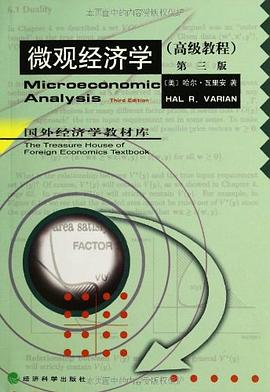

具體描述
《大學計算機教育國外著名教材係列:算法設計(影印版)》是近年來關於算法設計和分析的不可多得的優秀教材。《大學計算機教育國外著名教材係列:算法設計(影印版)》圍繞算法設計技術組織素材,對每種算法技術選擇瞭多個典型範例進行分析。《大學計算機教育國外著名教材係列:算法設計(影印版)》將直觀性與嚴謹性完美地結閤起來。每章從實際問題齣發,經過具體、深入、細緻的分析,自然且富有啓發性地引齣相應的算法設計思想,並對算法的正確性、復雜性進行恰當的分析、論證。《大學計算機教育國外著名教材係列:算法設計(影印版)》覆蓋的麵較寬,凡屬串行算法的經典論題都有涉及,並且論述深入有新意。全書共200多道豐富而精彩的習題是《大學計算機教育國外著名教材係列:算法設計(影印版)》的重要組成部分,也是《大學計算機教育國外著名教材係列:算法設計(影印版)》的突齣特色之一。
著者簡介
圖書目錄
Preface
Introduction: Some Representative Problems
1.1 A First Problem: Stable Matching
1.2 Five Representative Problems
Solved Exercises
Exercises
Notes and Further Reading
Basics of Algorithm Ana/ys/s
2.1 Computational Tractability
2.2 Asymptotic Order of Growth
2.3 Implementing the Stable Matching Algorithm Using Lists and Arrays
2.4 A Survey of Common Running Times
2.5 A More Complex Data Structure: Priority Queues
Solved Exercises
Exercises
Notes and Further Reading
3 Graphs
3.1 Basic Definitions and Applications
3.2 Graph Connectivity and Graph Traversal
3.3 Implementing Graph Traversal Using Queues and Stacks
3.4 Testing Bipaniteness: An Application of Breadth-First Search
3.5 Connectivity in Directed Graphs
3.6 Directed Acyclic Graphs and Topological Ordering
Solved Exercises
Exercises
Notes and Further Reading
4 Greedy Algorithms
4.1 Interval Scheduling: The Greedy Algorithm Stays Ahead
4.2 Scheduling to Minimize Lateness: An Exchange Argument
4.3 Optimal Caching: A More Complex Exchange Argument
4.4 Shortest Paths in a Graph
4.5 The Minimum Spanning Tree Problem
4.6 Implementing Kruskal's Algorithm: The Union-Find Data Structure
4.7 Clustering
4.8 Huffman Codes and Data Compression
* 4.9 Minimum-Cost Arborescences: A Multi-Phase Greedy Algorithm
Solved Exercises
Exercises
Notes and Further Reading
5 D/v/de and Corn/net
5.1 A First Recurrence: The Mergesort Algorithm
5.2 Further Recurrence Relations
5.3 Counting Inversions
5.4 Finding the Closest Pair of Points
5.5 Integer Multiplication
5.6 Convolutions and the Fast Fourier Transform
Solved Exercises
Exercises
Notes and Further Reading
6 Dynamic Programming
6.1 Weighted Interval Scheduling: A Recursive Procedure
6.2 Principles of Dynamic Programming: Memoization or Iteration over Subproblems
6.3 Segmented Least Squares: Multi-way Choices
6.4 Subset Sums and Knapsacks: Adding a Variable
6.5 RNA Secondary Structure: Dynamic Programming over Intervals
6.6 Sequence Alignment
6.7 Sequence Alignment in Linear Space via Divide and Conquer
6.8 Shortest Paths in a Graph
6.9 Shortest Paths and Distance Vector Protocols
* 6.10 Negative Cycles in a Graph
Solved Exercises
Exercises
Notes and Further Reading
Network Flora
7.1 The Maximum-Flow Problem and the Ford-Fulkerson Algorithm
7.2 Maximum Flows and Minimum Cuts in a Network
7.3 Choosing Good Augmenting Paths
* 7.4 The Preflow-Push Maximum-Flow Algorithm
7.5 A First Application: The Bipartite Matching Problem
7.6 Disjoint Paths in Directed and Undirected Graphs
7.7 Extensions to the Maximum-Flow Problem
7.8 Survey Design
7.9 Airline Scheduling
7.10 Image Segmentation
7.11 Project Selection
7.12 Baseball Elimination
* 7.1.3 A Further Direction: Adding Costs to the Matching Problem Solved Exercises
Exercises
Notes and Further Reading
NP and Computational Intractability
8.1 Polynomial-Time Reductions
8.2 Reductions via "Gadgets": The Safisfiability Problem
8.3 Efficient Certification and the Definition of NP
8.4 NP-Complete Problems
8.5 Sequencing Problems
8.6 Partitioning Problems
8.7 Graph Coloring
8.8 Numerical Problems
8.9 Co-NP and the Asymmetry of NP
8.10 A Partial Taxonomy of Hard Problems
Solved Exercises
Exercises
Notes and Further Reading
9 PSPACE: A Class of Problems beyond NP
9.1 PSPACE
9.2 Some Hard Problems in PSPACE
9.3 Solving Quantified Problems and Games in Polynomial Space
9.4 Solving the Planning Problem in Polynomial Space
9.5 Proving Problems PSPACE-Complete
Solved Exercises
Exercises
Notes and Further Reading
10 Extending the Limits of Tractability
10.1 Finding Small Vertex Covers
10.2 Solving NP-Hard Problems on Trees
10.3 Coloring a Set of Circular Arcs
* 10.4 Tree Decompositions of Graphs
* 10.5 Constructing a Tree Decomposition
Solved Exercises
Exercises
Notes and Further Reading
11 Approximation Algorithms
11.1 Greedy Algorithms and Bounds on the Optimum: A Load Balancing Problem
11.2 The Center Selection Problem
11.3 Set Cover: A General Greedy Heuristic
11.4 The Pricing Method: Vertex Cover
11.5 Maximization via the Pricing Method: The Disjoint Paths Problem
11.6 Linear Programming and Rounding: An Application to Vertex Cover
* 11.7 Load Balancing Revisited: A More Advanced LP Application
11.8 Arbitrarily Good Approximations: The Knapsack Problem
Solved Exercises
Exercises
Notes and Further Reading
Local Search
12.1 The Landscape of an Optimization Problem
12.2 The Metropolis Algorithm and Simulated Annealing
12.3 An Application of Local Search to Hopfield Neural Networks
12.4 Maximum-Cut Approximation via Local Search
12.5 Choosing a Neighbor Relation
12.6 Classification via Local Search
12.7 Best-Response Dynamics and Nash Equilibria
Solved Exercises
Exercises
Notes and Further Reading
Randomized Algorithms
13.1 A First Application: Contention Resolution
13.2 Finding the Global Minimum Cut
13.3 Random Variables and Their Expectations
13.4 A Randomized Approximation Algorithm for MAX 3-SAT
13.5 Randomized Divide and Conquer: Median-Finding and Quicksort
13.6 Hashing: A Randomized Implementation of Dictionaries
13.7 Finding the Closest Pair of Points: A Randomized Approach
13.8 Randomized Caching
13.9 Chernoff Bounds
13.10 Load Balancing
13.11 Packet Routing
13.12 Background: Some Basic Probability Definitions
Solved Exercises
Exercises
Notes and Further Reading
Epilogue: Algorithms That Run Forever
References
Index
· · · · · · (收起)
讀後感
By reading Algorithm Design, not only can you learn the modern algorithms used frequently in programming, it is also a good literature writing for the beautiful English in this book. It's worth your money and time to study multi times.
評分By reading Algorithm Design, not only can you learn the modern algorithms used frequently in programming, it is also a good literature writing for the beautiful English in this book. It's worth your money and time to study multi times.
評分cornell的教材。比起MIit的圣经,《算法设计》更侧重算法设计思路,不再赘述算法复杂度的分析。建议先看算法导论再看这个书,颇有推理之旅的感觉。 最后的扩展部分,包括PSPACE问题,参数复杂性,也很有趣味。如果算法导论是普及,算法设计更循循善诱如何这些算法。 只有在无以...
評分个人因为此书排版(中文版)层次主次均不分明,文字翻译的让人不着头脑,不过原书确实具有很大的启发性,同时个人觉得写的似乎有些冗余,不够精炼,不如<alg0rithms>,总体上来说就是:翻译的不好,原文比较具有引导性;推荐新学的童鞋们可以浏览一下,重点可以放在《导论》或者...
評分个人因为此书排版(中文版)层次主次均不分明,文字翻译的让人不着头脑,不过原书确实具有很大的启发性,同时个人觉得写的似乎有些冗余,不够精炼,不如<alg0rithms>,总体上来说就是:翻译的不好,原文比较具有引导性;推荐新学的童鞋们可以浏览一下,重点可以放在《导论》或者...
用戶評價
砍掉瞭1.2、4.2、4.3、6.5、6.7、6.9、6.10、7.4、7.8-11、7.13、8.5、8.7、8.9及以下。分治法講得太少,習題廢話太多,除此兩點之外都挺好。
评分從講述到練習非常通暢,隻需要時間練習
评分這本屬於"元"算法.算法導論屬於給你固定套路你去學的.
评分當年本科算法客的教材。說來可笑,研究生算法課用書居然是這本,“算法設計與分析”,http://book.douban.com/subject/1400350/
评分寫得不錯。兩門課的textbook。
相關圖書
本站所有內容均為互聯網搜索引擎提供的公開搜索信息,本站不存儲任何數據與內容,任何內容與數據均與本站無關,如有需要請聯繫相關搜索引擎包括但不限於百度,google,bing,sogou 等
© 2025 book.quotespace.org All Rights Reserved. 小美書屋 版权所有




















